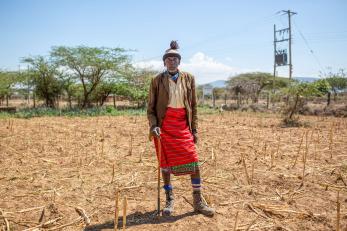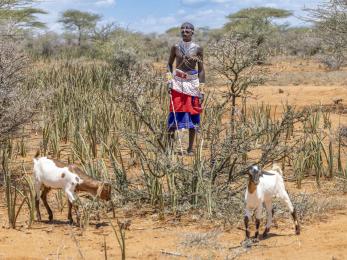Participatory Planning in Kenya’s Drylands
The Ward Development Planning Model

Read the summary ▸
Read the policy brief ▸
There is great potential to take a bottom-up approach to development planning in the drylands that includes the knowledge, input, and support of dryland communities. To date, pastoralists have had limited participation in government planning processes, which has resulted in misguided development interventions in the drylands that undermine livelihoods and increase vulnerability.
In this policy brief, and accompanying summary, we describe the Ward Development Planning (WDP) model, a participatory planning approach currently implemented in five counties in Kenya’s drylands. We summarise key learning on the model and provide recommendations for scaling up participatory planning for contextually appropriate and locally legitimate resilience-oriented development. This work was funded and undertaken by Supporting Pastoralism and Agriculture in Recurrent and Protracted Crises (SPARC), of which Mercy Corps is a partner.
Drawing on research carried out by SPARC in Garissa, Isiolo, and Turkana counties in October and November 2021 in wards where the WDP model is being implemented, and on supplemental interviews with key informants and a review of programme documents related to WDP, our findings show that:
- The WDP model deepens Kenya’s devolution to the ward level and addresses the chronic political and economic marginalisation characteristic of dryland regions.
- The ward-level planning institution fills a disconnect between community and government planning institutions and devolves decision-making to the lowest appropriate level.
- WDP empowers communities to directly engage in development planning through participatory and deliberate processes.
- There is effective representation and accountable decision-making through inclusive public selection processes of Ward Planning Committees.
- WDP prioritises development action at the local level according to community-identified needs to ensure investments are contextually relevant and locally appropriate.
Our analysis highlighted the potential to scale-up the WDP model elsewhere in Kenya and further afield. We provide the following recommendations for scaling up participatory planning:
- The WDP model can be scaled across Kenya and beyond. Upscaling the approach requires contextualisation and adaptation during implementation to match the approach to the local governance institutional context and avoid proliferating redundant institutions or competition with existing governance structures.
- It is important to maintain a focus on the quality of participation, the process of representative selection and inclusivity.

